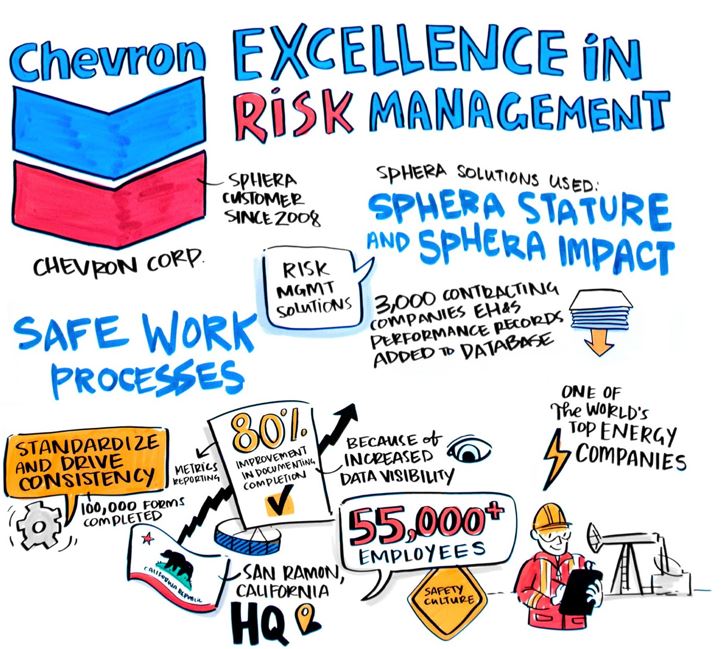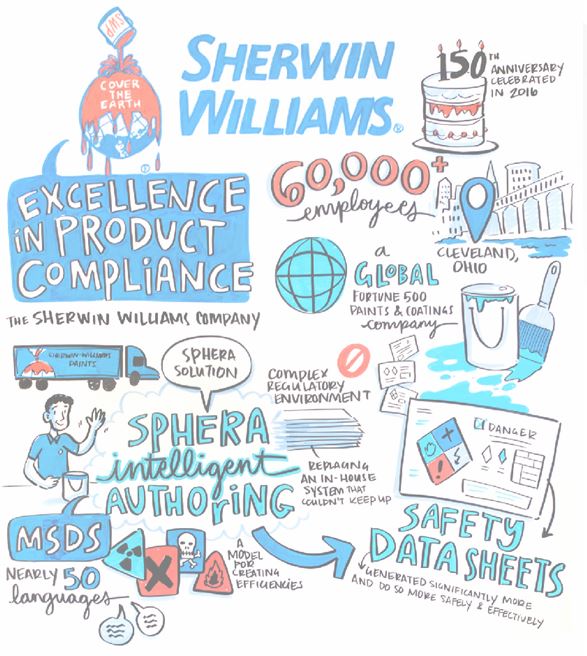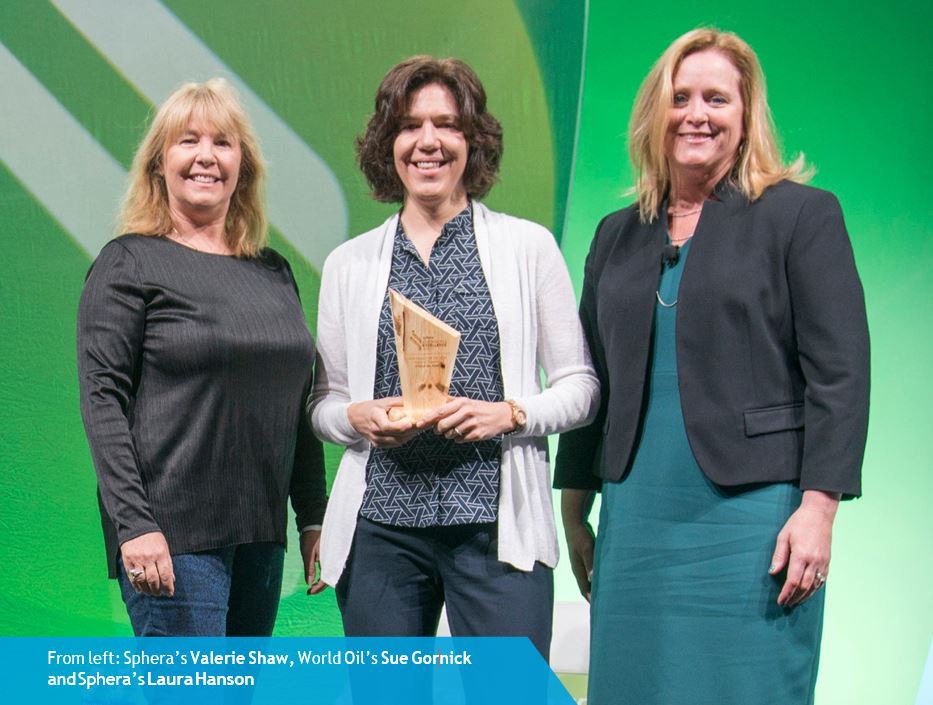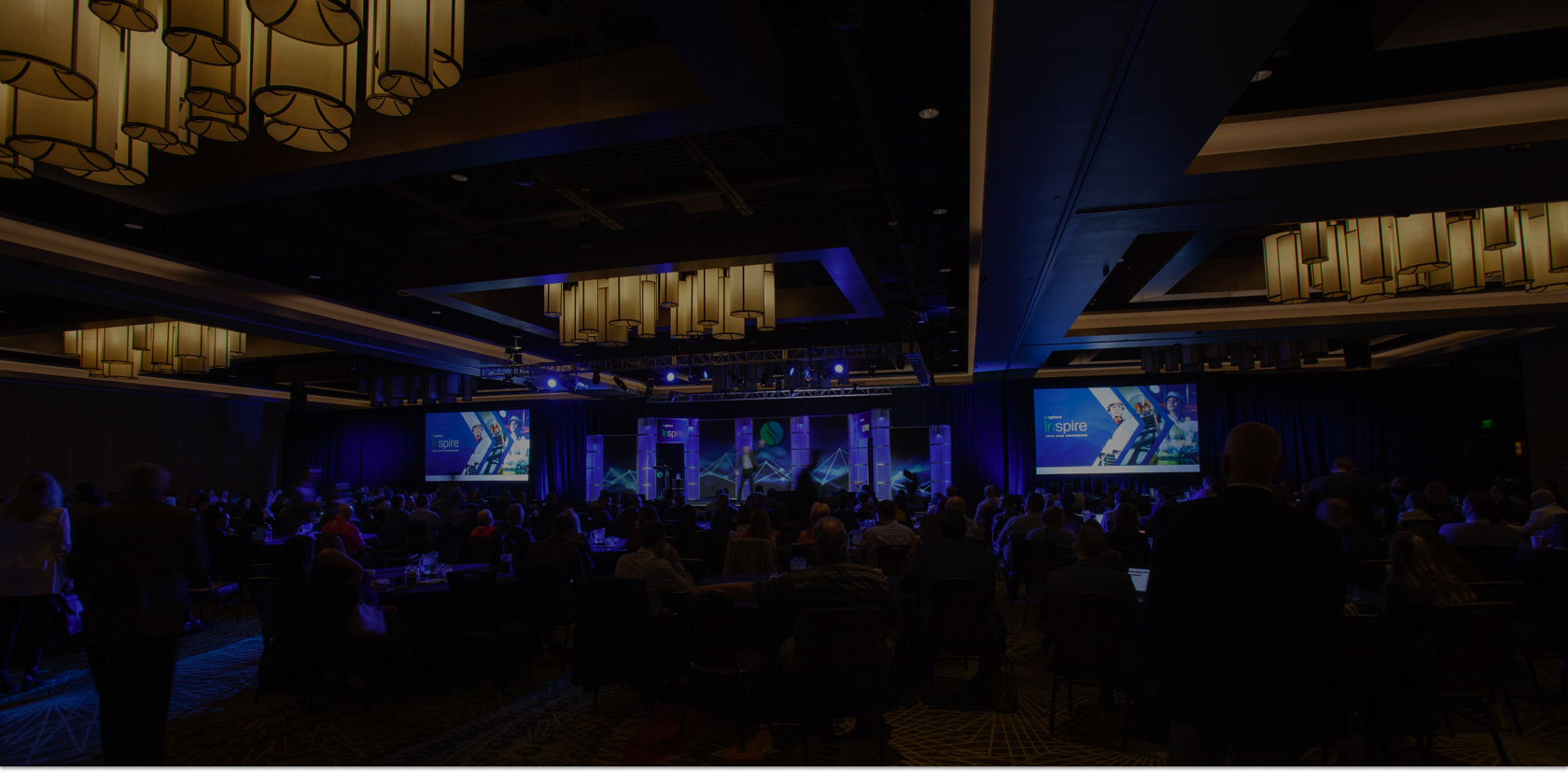In 2017, a few hundred sphera customers, industry experts and Spherions headed to Austin, Texas, and Brussels, Belgium, for our inspire user conferences.
At the two events, attendees were treated to a bevy of training opportunities, a cornucopia of panel discussions and presentations, and a whole lot of fun—from getting the opportunity to get their picture taken on a long-horned steer either named RibEye or T-Bone to devouring delicious Texas barbecue in Austin to dining in the elegant Belga Queen restaurant in Brussels (See “What Transpired at Inspire,” p. 41.)
Sphera also awarded eight companies with Embracing Excellence Awards recognizing their commitment to keeping their workers safe, their products sustainable and their operations productive. In Austin, we had the opportunity to catch up with some of the winners and discuss their winning projects in separate interviews.
Wilfred Beijers is Chevron Corp.’s Impact solution adviser, Edward Kizys is The Sherwin Williams Co.’s senior information technology analyst, and Sue Gornick is World Oil Corp.’s vice president of Environmental Health & Safety. An edited transcript of our conversations follows.

Spark: Chevron won a Sphera Embracing Excellence Award today. How exciting is that?
Wilfred Beijers: I think it’s great! It’s positive recognition for the partnership that we’ve had with Sphera over the years, and we’re definitely looking forward to a continued partnership.
Spark: What are the Environmental Health & Safety challenges that affect Chevron?
Beijers: We’re facing challenges when it comes to properly setting up IT systems in support of our Environmental Health & Safety. I believe that we need to go through a digital transformation just to really get our strategy straight and, at the same time, align with Sphera on that strategy. We want to align our roadmaps to make sure that we invest in the right areas so we can really move the needle on safety.
Spark: Does that mean harnessing the data?
Beijers: It means all of the above. It means harnessing the data and learning from the data, but it starts, of course, with making sure that we have a user-friendly methodology to collect the information—that it’s sustainable, that it’s cost-effective. It means that we must be able to integrate with other applications.
Spark: How do Sphera’s solutions help to improve Chevron’s operations?
Beijers: So the way that Sphera’s solutions help us right now is we have configured them to such a degree that they really support our processes. The applications that we utilize, whether Essential or Stature or Impact, really support that well. However, we really need to start looking at the next opportunities, which include integration and better use of the data. We need data that supports what we refer to as safeguards. We need to measure safeguard performance and have indicators for how safe we are—where we’re vulnerable— to understand our risks and where we need to improve.
Spark: Does Chevron use cloud software, on-premise or a hybrid model?
Beijers: We use cloud solutions but only a few in support of EHS. So, we are looking to expand. We definitely plan to work with Sphera to get there because we have an IT strategy to implement cloud solutions. Whether it’s going to be a PaaS [Platform as a Service] solution or a SaaS [Software as a Service] solution, that has yet to be determined, but we’re excited about Sphera moving to the cloud.

Spark: You won an Excellence award today. How exciting is that?
Edward Kizys: We really appreciate the recognition. We put a lot of work into architecting the Intelligent Authoring system into our environment and making it as functional and productive as possible.
Spark: Can you tell me a little about Sherwin-Williams’ EHS goals?
Kizys: Our goal was to provide the customer hazardous material information as quickly as possible. So when we put our system together, the idea was to have a Safety Data Sheet available to the customer or to our product specialist almost immediately. We have about a five- to 10-minute turnaround window where we want to be able to have that document available for the customer on our website so that they can understand what they’re purchasing and what’s in their product.
Spark: Were there any pain points along the way?
Kizys: Pain points were what you expect in a project like this, where the IA system was a core component of a work flow that we were building. We integrated our blending laboratory systems with our product maintenance system, which loads products into our IA system. Regulatory documents and data are then exported to our document management system and a data warehouse. The pain points involved integrating product data between systems and tuning the publishing automation subsystem to provide the completion times and throughput we needed.

Spark: How was Sphera able to help facilitate that?
Kizys: Well, the major deciding factor in using Sphera’s IA was that the system supports all the various regulatory regions we needed to publish documents for. We’re an international company that ships all over the world. We needed a system that could support all of the classification standards that are out there along with all the languages that documents need to be produced in. Sphera was a winner in that regard.
Spark: How do you communicate the ROI of safety to an executive team from an IT perspective?
Kizys: The ROI comes from being able to produce product safety information that the customer needs as quickly as possible, and in a high volume. We built a system that can handle over 100,000 various products, publish SDS documents and label data in under five minutes, and process thousands of products daily. We’ve been successful in using one system to provide information that meets all the regulatory and language requirements that our customers and internal marketing, safety and operations teams need.

Spark: Congratulations on your award. What are your thoughts?
Sue Gornick: It’s pretty exciting. We haven’t received a reward like this before. I’ve only been with the company for a year, and we are just getting into software and data analytics. So this is our first program, which is a task module to bring into the cloud.
Spark: What are your company’s Environmental Health & Safety goals?
Gornick: World Oil has a diversity of operations, from refining and recycling to trucking operations, and our EHS goal is to have 100 percent compliance with all regulatory requirements while also protecting our employees in every operation we have.
Spark: Were there any pain points along the way that you had to address?
Gornick: Our company has just gone through a major rebranding. We had to integrate each division’s EHS goals into one centrally managed system. That’s just over the last two years.

Spark: How has Sphera been able to help with that?
Gornick: Sphera is really beginning to bring the cloud to our company. That is something that we have not seen before. Most of the systems that we have in place now are spreadsheet-based, and we are now able to put data from Environmental Health & Safety into the cloud and into systems that we can search and be consistent throughout the company.
Spark: How do you communicate the return on investment of safety solutions to the executive team?
Gornick: I walk upstairs and talk to them. <Laughs> Return on investment is very important to my company. As a family-owned business, improved safety and compliance translates into lower operating costs. Our ownership recognizes the need to continuously improve, and the importance of being consistent across all divisions.

